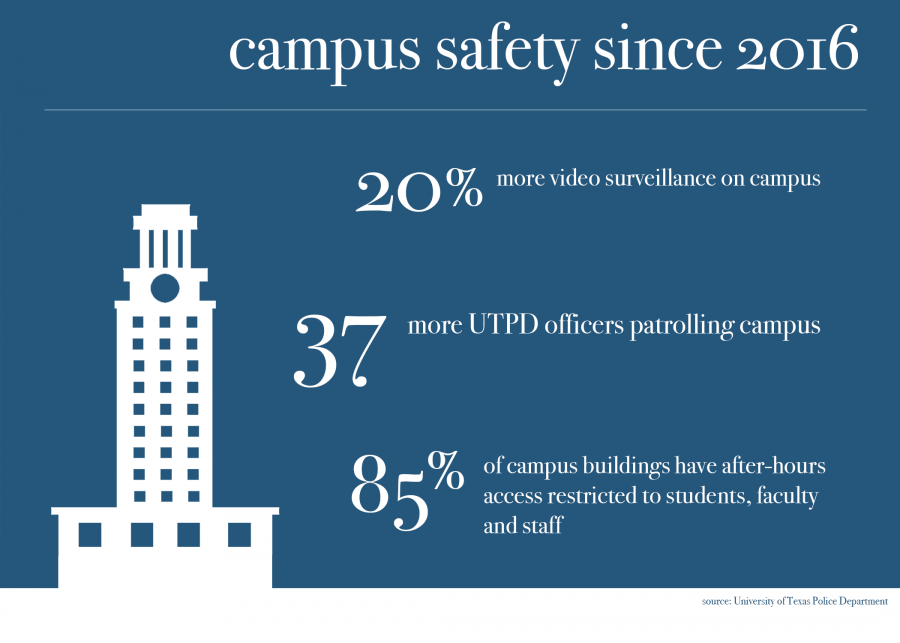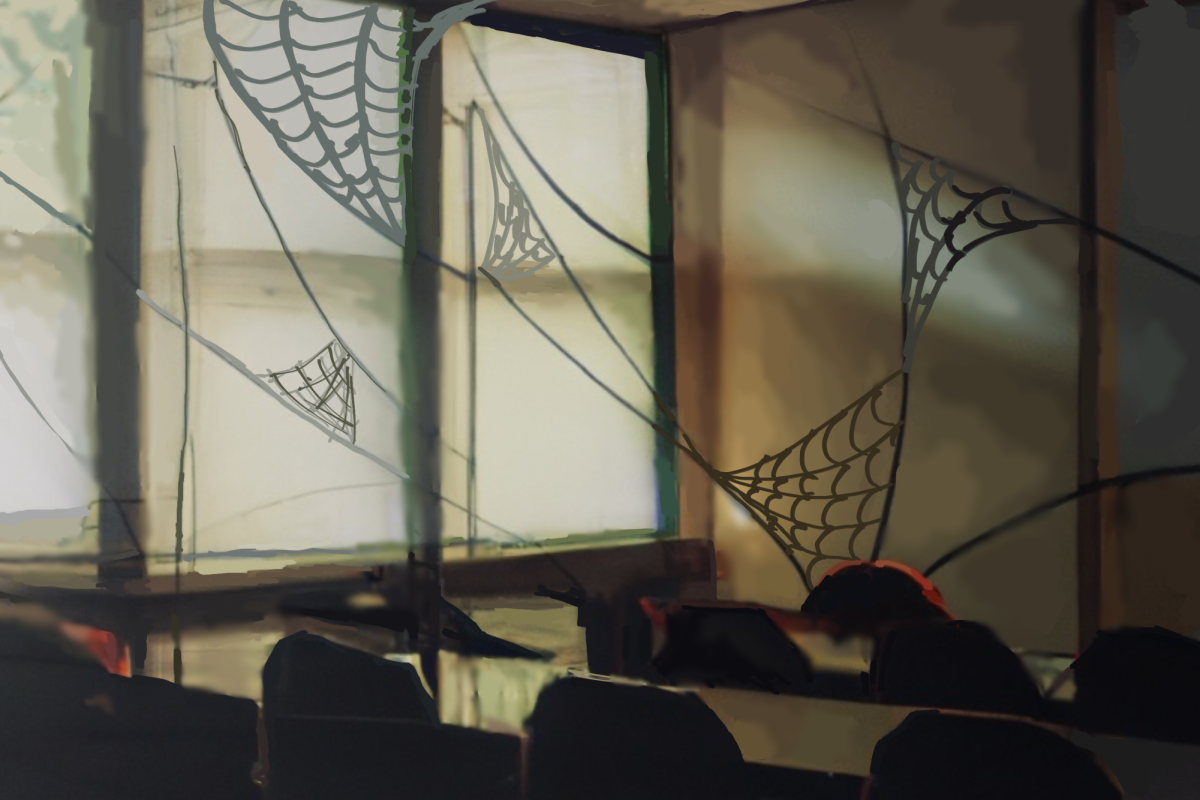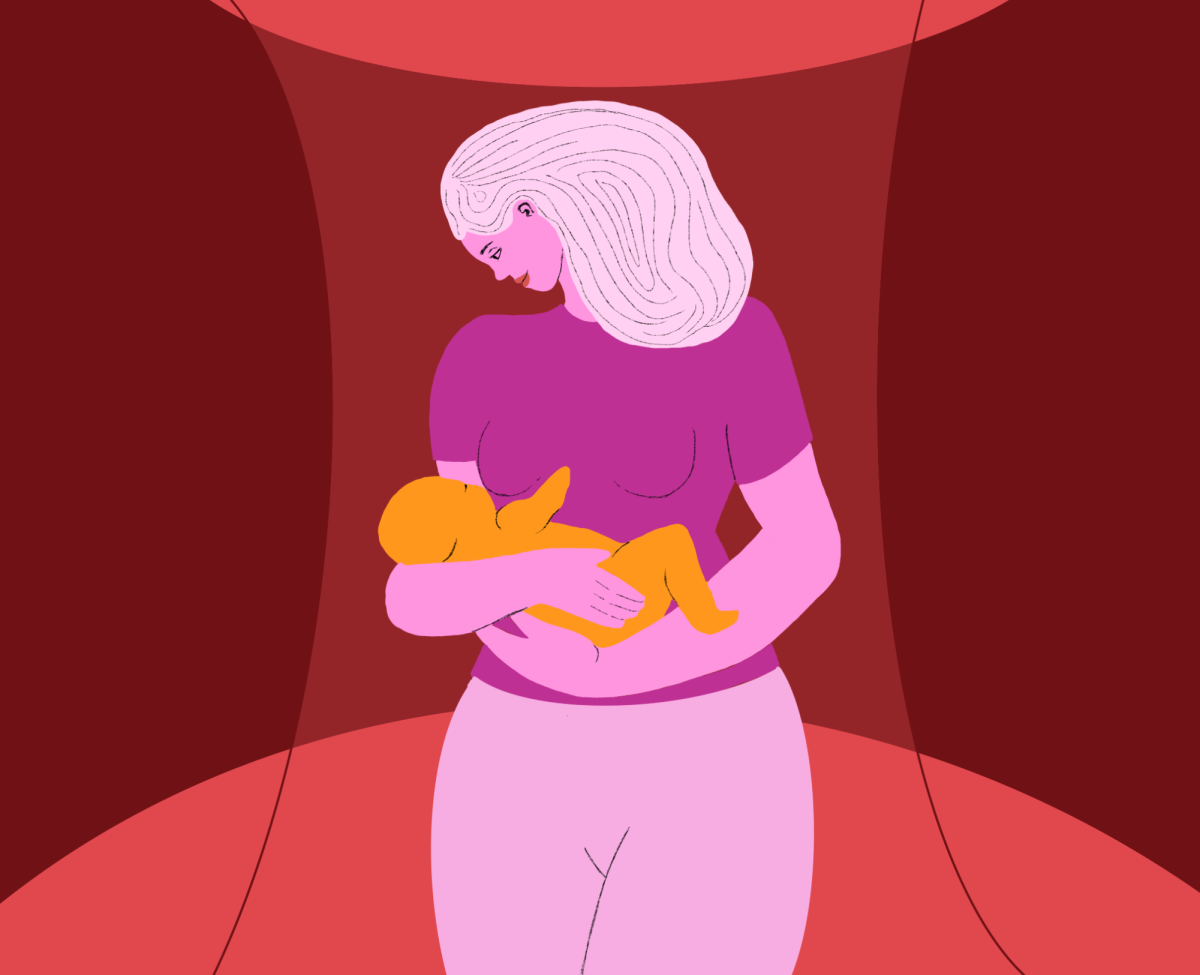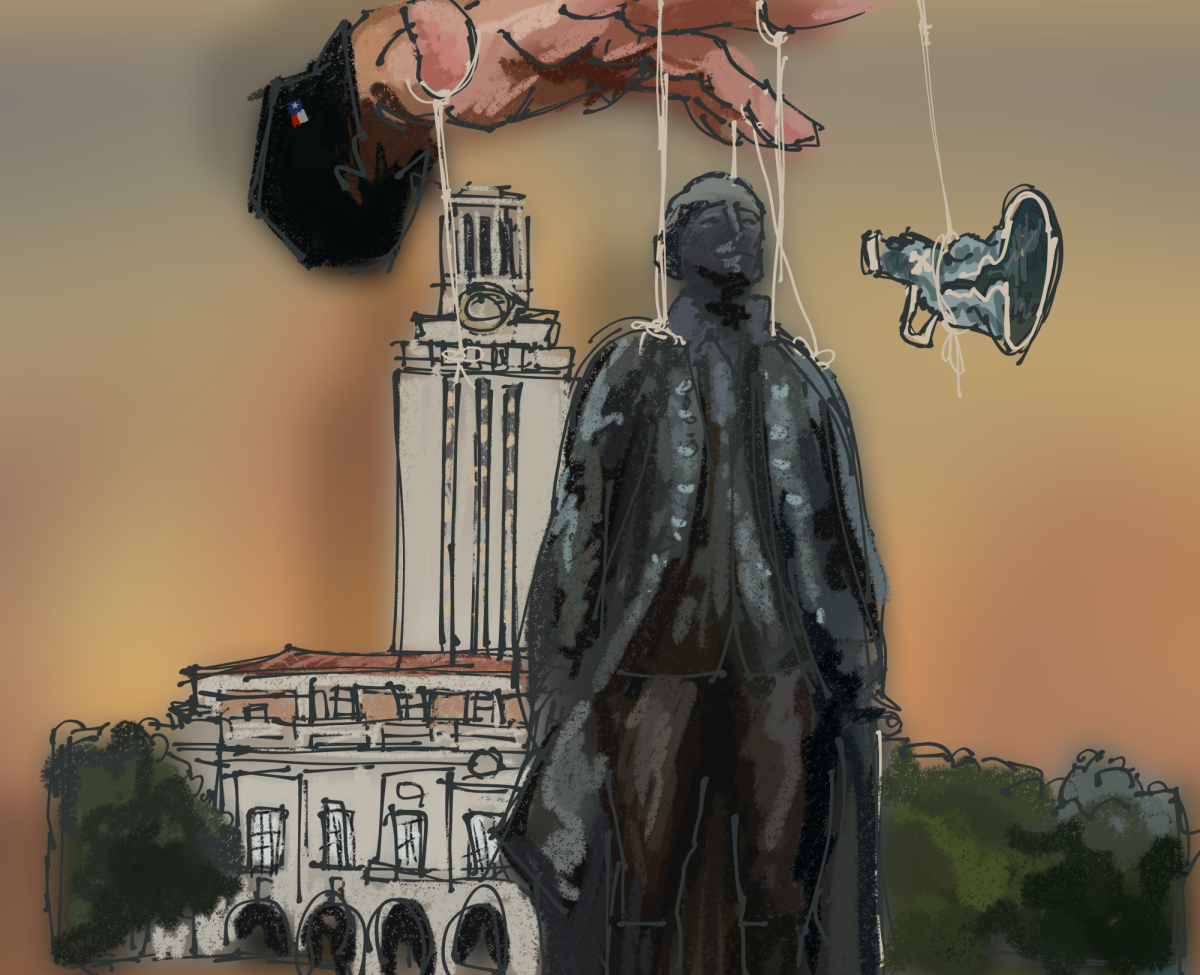In the immediate aftermath of Haruka Weiser’s brutal on-campus murder in April 2016, the University launched initiatives to reassess and update campus security procedures. In August 2016, the Texas Department of Public Safety released a complete review of the UT campus that included five key areas for improvement.
Two years later, we looked at the progress UT has made. We also sat down with UT students, many of whom have noticed the steps UT has taken toward creating a safer campus. In each of the five areas noted by the DPS, we found that the University has made commendable progress toward improving campus safety. Students and administration alike, however, would benefit from increased dialogue about safety on campus.
The first of the five DPS recommendations called for increased public safety staffing on campus — specifically UT police officers and security guards. In April 2016, at the time of Weiser’s murder, UTPD had 67 on-campus officers. As of July 2018, that number had increased to 104. Many of the students we spoke to mentioned seeing more police than they remembered when they first arrived on campus.
The DPS also suggested improvements to the campus camera system. In the past two years, UT has increased the capacity of the system by 20 percent. Jimmy Johnson, assistant vice president for campus safety, notes that constant surveillance of campus isn’t conducive to the University’s mission or economically possible, but campus cameras are still vital in instances of forensic investigations.
The recommendations also included increasing lighting and visibility on campus. The San Jacinto Corridor, the area of campus where Weiser was murdered, was poorly lit and overgrown in 2016. Now, UTPD works with landscaping services to remove excess growth and to add or replace light fixtures when necessary. Such improvements, however, require constant updates. As a result, students are encouraged to report bulb outages when they see them.
The report also recommended that UT work alongside the City of Austin to reduce the presence of homeless individuals on and around campus. Meechaiel Criner was homeless at the time of Weiser’s death, and many students and parents have subsequently linked homelessness to crime. But as Johnson points out, homelessness itself is not illegal, and its perceived connection to crime is often inaccurate. Nevertheless, City of Austin initiatives exist to reduce homelessness by providing services before a crisis, and UTPD has complemented the city’s work by increasing patrols in West Campus.
Finally, the DPS called for limiting access to campus buildings after hours to UT students, faculty and staff. This recommendation seems a direct response to Weiser’s murder, as according to prosecutors, Criner briefly squatted in an on-campus building before her death. Although the project began before Weiser’s death, about 85 percent of on-campus buildings have been retrofitted with technology that restricts after-hours access to those carrying a UT ID card.
Weiser’s death was the first on-campus murder since the 1966 tower shooting. In its wake, UT has addressed safety concerns by prioritizing campus security. Many students we talked to, however, still want more from the University.
There isn’t really a consensus among UT students on whether campus feels safe. Dozens of factors influence how students perceive their personal safety — from national conversations about the proliferation of gun violence and rising number of hate crimes, to local concerns such as campus carry, racism in student government elections, homelessness in Austin and crime in West Campus.
Several students noted that based on their experiences, the administration seems closed off to suggestions. We know, however, that UT needs this feedback to do its job properly.
“Campus safety is paramount with us,” Johnson told us. “The University has it as a high priority, and we’re continually looking at ways to improve on that based on our campus community feedback.”
While the University and UTPD should continue expanding their student outreach programs, it is equally important that major events be part of an honest discussion on campus safety. Events such as the deaths of Haruka Weiser and Harrison Brown warrant open communication about campus policy between the University and students.
While students should push themselves to be open about their experiences and observations on campus, University administrators — not just UTPD — need to more actively engage with students on the issue of safety. This engagement could take the form of town hall meetings where administrators listen to student feedback about safety and climate on campus. The University could also conduct surveys about students’ experiences that extend beyond simple observations and statistics. Or UT could advertise an online method of commenting on safety concerns separate from reporting a specific incident.
By opening up a dialogue about safety and climate on campus, the UT community can discuss and learn from recent tragedies, and hopefully work to prevent another in the future.
Check out the rest of this project at thedailytexan.atavist.com/campus-safety.





















